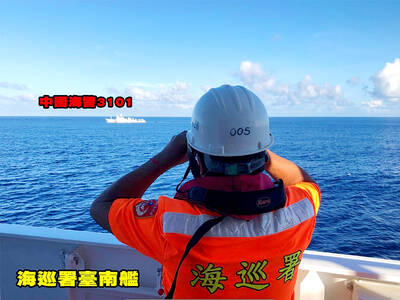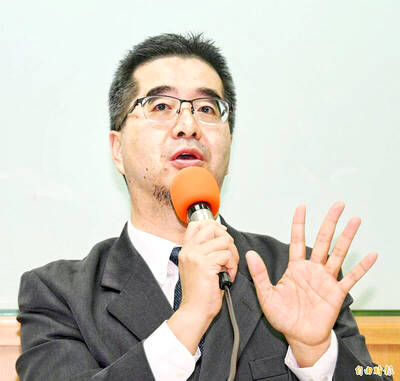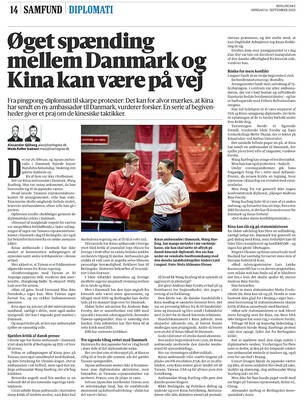The Council of Indigenous Peoples on Tuesday updated the public on its progress in scoping Aboriginal land, a process that Aboriginal settlements must participate in if they want to have a say in development projects in their neighborhoods, the council said.
The first stage of scoping, which is to be updated again next year, covers one-third of all Aboriginal settlements, including those inhabited by the Thao people, who initially refused to have their territory included.
As of Aug. 31, when applications for scoping closed, 268 settlements in 31 townships and villages had applied, which accounted for about one-third of the total number of Aboriginal settlements nationwide, the council said.
Applicants came from 15 groups, including the Amis and the Rukai, it said.
In the past, Aboriginal land was categorized as reserves and traditional territories, the latter of which lacked a clear definition, which had often sparked disputes, Council of Indigenous Peoples Minister Icyang Parod said.
To address this problem, the council launched the Aborignal Land and Settlements Census and Scoping Initiative in a bid to clearly demarcate traditional territories, so that Aboringines would be able to exercise their legal rights to reject or approve development projects regardless of the value of the land they live on, Icyang said.
The Thao initially refused, but eventually agreed because their land in Nantou County has become the site of major development projects, such as the Hsiangshan holiday resort and Peacock Garden hotel development project, both near Sun Moon Lake (日月潭).
Development projects on scoped land must obtain the approval of Aborigines, thus preventing contentious projects, such as Asia Cement Corp’s extended mining rights near Taroko National Park in Hualien and the beachfront Meiliwan Resort Hotel development in Taitung from being approved, Icyang said.

The Coast Guard Administration (CGA) yesterday said it had deployed patrol vessels to expel a China Coast Guard ship and a Chinese fishing boat near Pratas Island (Dongsha Island, 東沙群島) in the South China Sea. The China Coast Guard vessel was 28 nautical miles (52km) northeast of Pratas at 6:15am on Thursday, approaching the island’s restricted waters, which extend 24 nautical miles from its shoreline, the CGA’s Dongsha-Nansha Branch said in a statement. The Tainan, a 2,000-tonne cutter, was deployed by the CGA to shadow the Chinese ship, which left the area at 2:39pm on Friday, the statement said. At 6:31pm on Friday,

The Chinese People’s Liberation Army Navy’s (PLAN) third aircraft carrier, the Fujian, would pose a steep challenge to Taiwan’s ability to defend itself against a full-scale invasion, a defense expert said yesterday. Institute of National Defense and Security Research analyst Chieh Chung (揭仲) made the comment hours after the PLAN confirmed the carrier recently passed through the Taiwan Strait to conduct “scientific research tests and training missions” in the South China Sea. China has two carriers in operation — the Liaoning and the Shandong — with the Fujian undergoing sea trials. Although the PLAN needs time to train the Fujian’s air wing and

The American Institute in Taiwan (AIT) put Taiwan in danger, Ma Ying-jeou Foundation director Hsiao Hsu-tsen (蕭旭岑) said yesterday, hours after the de facto US embassy said that Beijing had misinterpreted World War II-era documents to isolate Taiwan. The AIT’s comments harmed the Republic of China’s (ROC) national interests and contradicted a part of the “six assurances” stipulating that the US would not change its official position on Taiwan’s sovereignty, Hsiao said. The “six assurances,” which were given by then-US president Ronald Reagan to Taiwan in 1982, say that Washington would not set a date for ending arm sales to Taiwan, consult

A Taiwanese academic yesterday said that Chinese Ambassador to Denmark Wang Xuefeng (王雪峰) disrespected Denmark and Japan when he earlier this year allegedly asked Japan’s embassy to make Taiwan’s representatives leave an event in Copenhagen. The Danish-language Berlingske on Sunday reported the incident in an article with the headline “The emperor’s birthday ended in drama in Copenhagen: More conflict may be on the way between Denmark and China.” It said that on Feb. 26, the Japanese embassy in Denmark held an event for Japanese Emperor Naruhito’s birthday, with about 200 guests in attendance, including representatives from Taiwan. After addressing the Japanese hosts, Wang